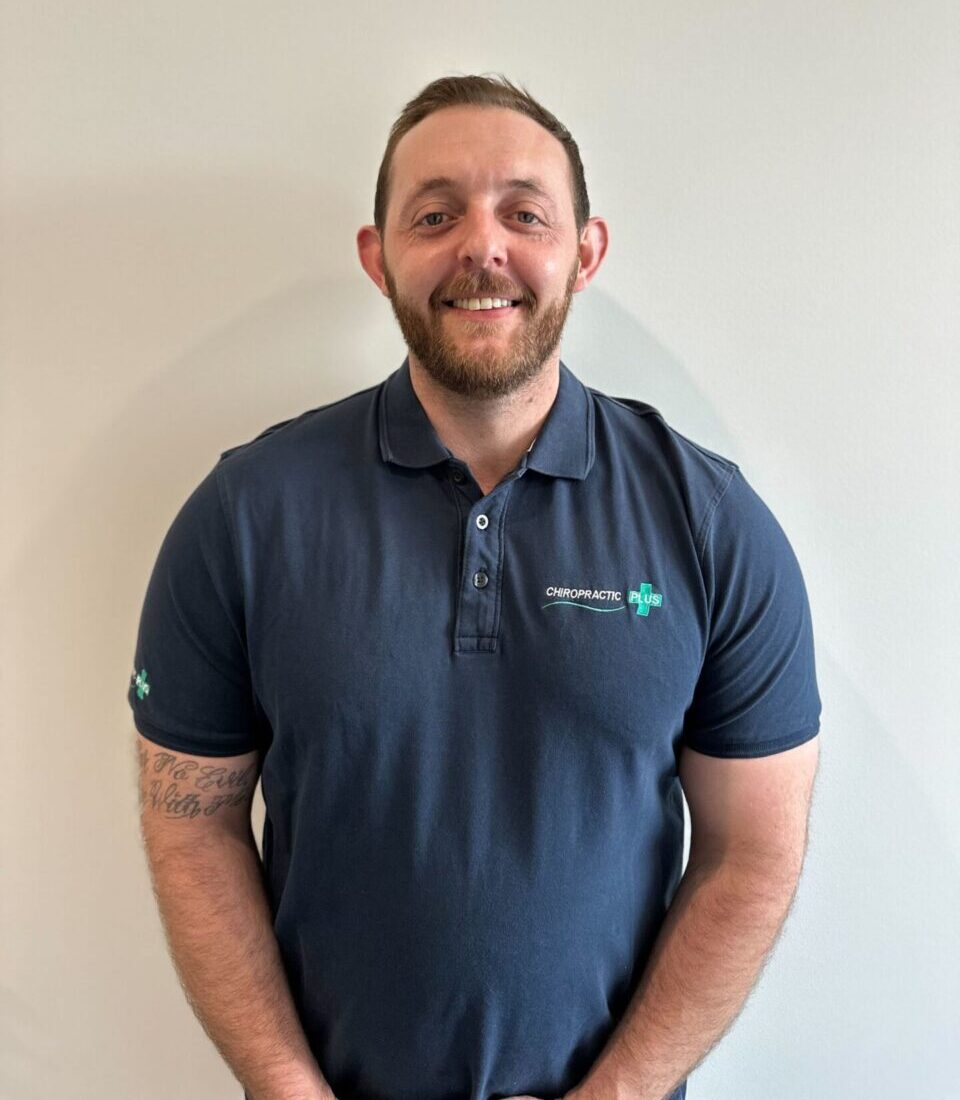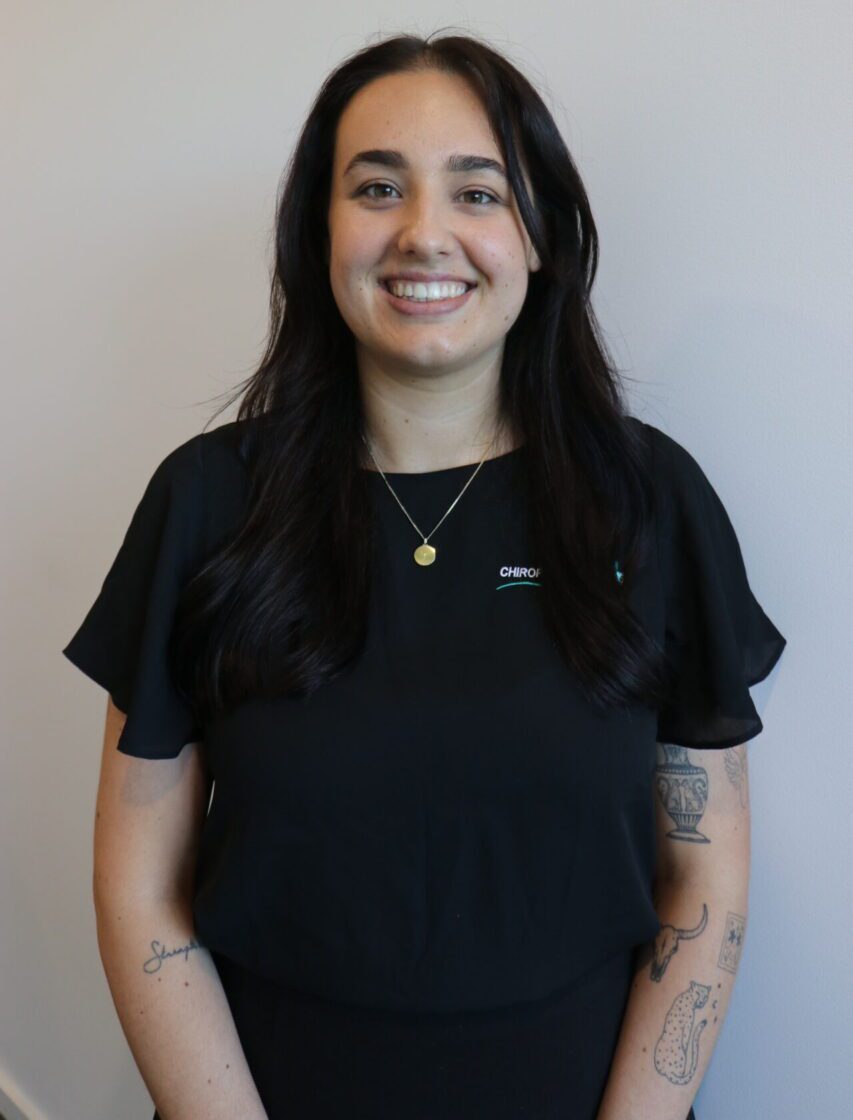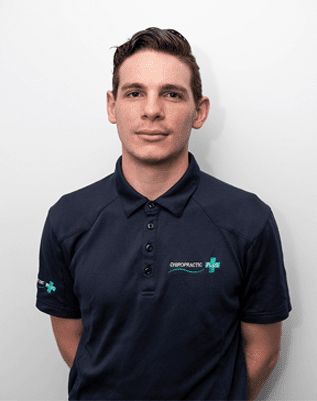How dry needling works
September 23, 2024 9:53 am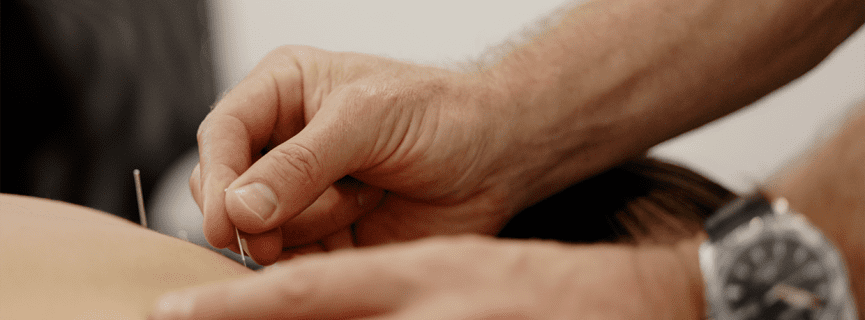
Performed by medical physicians, physical therapists and chiropractors across the globe, dry needling targets muscle ‘trigger points’ to help relieve pain, restore mobility and aid recovery. But how does dry needling work exactly? And is it painful?
Below, we explain the mechanisms underlying this safe, comfortable and drug-free technique, as well as share the many conditions it can help to address. Equipped with this knowledge, you can better understand whether dry needling may be an appropriate technique for your body.
First, what is a myofascial trigger point?
Before we dive into how dry needling works, it’s important to understand what a myofascial trigger point is. This is a collection of muscle fibres that contracted when activated but then failed to relax and lengthen afterwards, whether due to overuse or strain. The surrounding muscles may also tighten.
As these muscle fibres grow tighter, they compress the capillaries and nerves that supply it with fresh blood. As a result, the muscle cannot receive adequate oxygen and nutrients or get rid of any excess acidic chemicals. What’s more, the myofascial trigger point can cause hypersensitivity to touch, discomfort with movement, reduced joint mobility, and in more extreme cases, an acute loss of coordination.
A myofascial trigger point can form as a protective response to events such as:
- Injury
- Sudden or rapid movements
- Nerve impingement
- Poor posture
- Illness
- Nutritional deficiencies
- Metabolic and endocrine disorders
- An increase in the intensity or frequency of physical activity
Multiple trigger points can develop within one area and may worsen with time if not addressed. Before your dry needling session begins, the therapist will identify each trigger point.
What is dry needling?
Dry needling is a therapeutic technique that involves inserting fine filament needles into myofascial trigger points (known more widely as ‘muscle knots’). This process releases muscle tension, in turn alleviating pain and restoring function. The term ‘dry’ is intended to distinguish it from any sort of syringe-based approach whereby fluid is injected into the body.
While dry needling may seem similar to acupuncture because both utilise needles, it’s important to understand that these techniques require different training and processes.
Learn more about dry needling vs acupuncture
How does dry needling work?
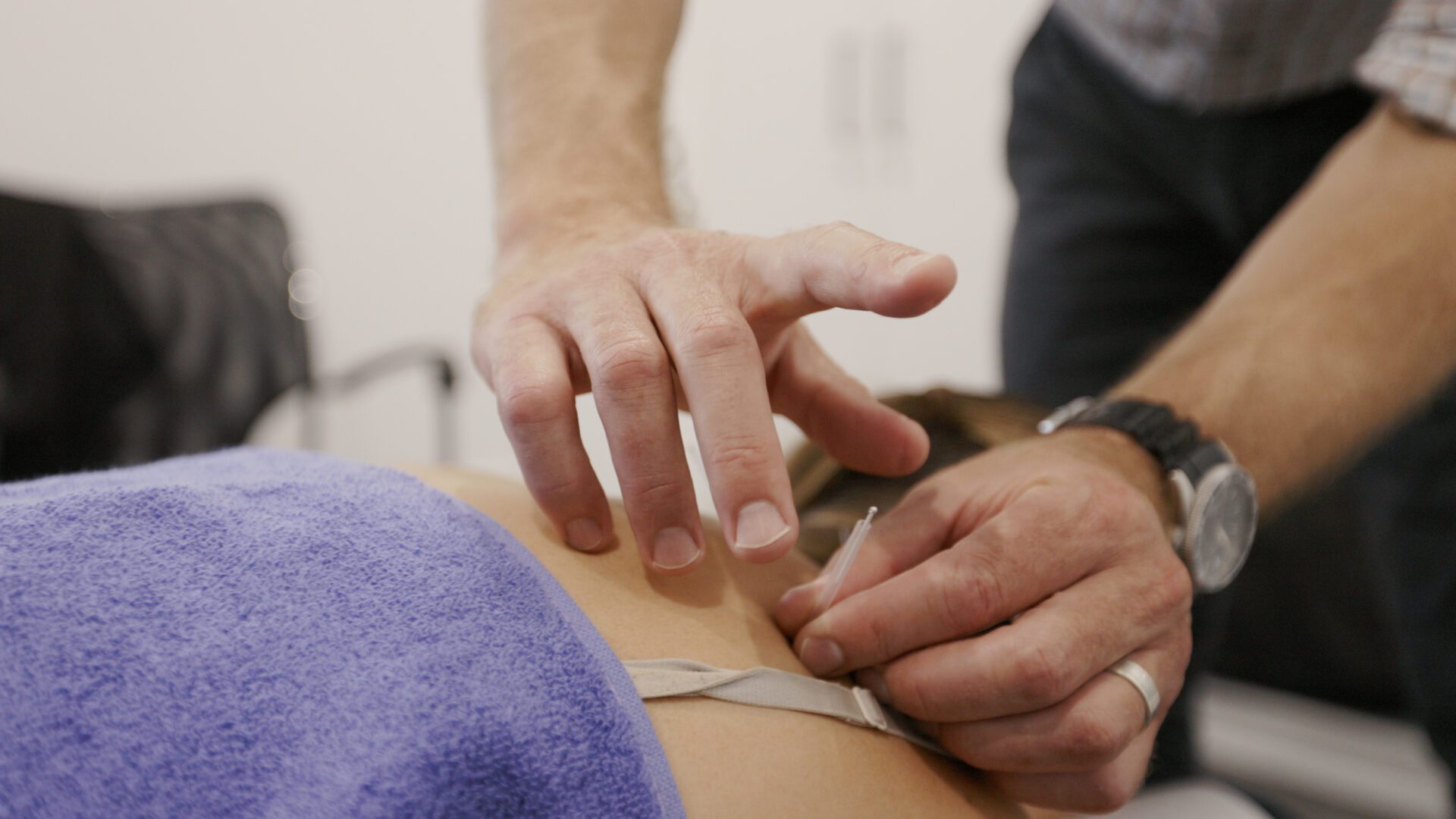
If a muscle is contracted for an extended period, it can’t get the blood, oxygen and nutrients needed to return to its usual resting state.
Dry needling works by releasing tension at myofascial trigger points, in turn reducing pain and restoring the muscle’s ability to relax and extend. Importantly, these needles are solid, which means no liquid is injected into your body.
To start, your therapist will palpate the problem area and create a map of myofascial trigger points to target. Once each trigger point has been identified, a thin monofilament needle will be inserted directly into the skin. The depth and duration of this insertion varies depending on the type of discomfort and condition being addressed (more on this process below).
There is still debate over the precise physiological mechanism underlying the impact of dry needling.
That said, it’s generally believed that needling a trigger point creates a tiny, precise lesion in the tissue that elicits a muscle twitch, sending injury signals to the brain to repair the damaged tissue.
More specifically, dry needling causes vasodilatation, which boosts circulation and oxygen and nutrient delivery to the affected area. Blood supply is drawn to the area to remove built-up toxins and relieve muscle tension, ultimately improving comfort and mobility.
Dry needling also works to relieve pain by sparking an endorphin release that gives a natural analgesic effect.
What does dry needling do?
Dry needling offers a drug-free technique to improve musculoskeletal issues and myofascial pain. By improving blood circulation, boosting oxygen and nutrient delivery and reducing muscle tension in the target area, this needle insertion can help to soothe pain, restore a healthy range of motion and promote your natural healing process.
Note that dry needling is usually only one component of a wider therapy plan, and is commonly used at the very beginning to break the pain cycle.
Delivery is also tailored to each patient’s distinct requirements, ranging from a single session to a longer-term schedule.
What conditions can be helped with dry needling?
Below are just a handful of conditions that are often addressed with dry needling:
- Sciatica
- Back pain
- Shoulder pain
- Neck pain
- Knee pain
- Tendonitis
- Arthritis
- Fibromyalgia
- Repetitive strain injuries
- Sports injuries
- IT band syndrome
- Muscle tension
- Muscle spasms
- Headaches
The dry needling process step-by-step
Before the session
Your dry needling experience begins with a comprehensive review of your medical history, followed by a physical examination. This helps your therapist decide if dry needling is the right choice for you.
If you’re a suitable candidate, they’ll walk you through the procedure, answering any questions and easing any concerns. Your therapist will then position you in such a way that allows suitable access to the target area.
During the session
The session begins with your therapist conducting a meticulous examination to identify the exact trigger points responsible for your discomfort. After pinpointing these areas, they’ll cleanse the skin and create a sterile environment, ensuring the procedure is safe and effective.
Using one hand, your therapist will palpate the area to locate the trigger point, while the other hand positions the needle within a plastic guide tube over the precise spot. The guide tube aids in accurately tapping the needle into place with expert precision.
Different techniques may be employed during the session:
- Superficial: The needle is inserted shallowly, about 5 to 10 millimeters, into the subcutaneous tissue above the trigger point.
- Deep: The needle penetrates deeper into the muscle tissue, directly targeting the trigger point for a more intense effect.
The duration the needle remains in place can vary from a few seconds to up to 20 minutes, depending on the technique and your specific needs. Your therapist may also use the “pistoning” technique, rapidly moving the needle in and out to stimulate the muscle tissue further.
In your initial sessions, the therapist might start with just one or two needles to observe how your body responds. As your treatment progresses, they may gradually increase the number of needles used, tailoring the approach to your condition.
After the session
Once the needles are removed, many patients experience a wave of relief. To maximise the benefits of dry needling, your therapist may guide you through targeted exercises.
It’s normal to feel some muscle soreness afterward, but this usually fades quickly, leaving you with the long-lasting benefits of the session.
Make sure to drink lots of water to stay hydrated after your dry needling session.
Is a “twitch” essential for dry needling to work?
During dry needling, inserting the needle into a myofascial trigger point might trigger a local twitch response, a brief and visible muscle contraction. Some therapists aim to provoke this “twitch” by using a rapid insertion-and-withdrawal method known as “pistoning.”
That said, experiencing a “twitch” isn’t necessary for successful dry needling, and it may not always occur during the procedure.
Does dry needling hurt?
Dry needling does not hurt when administered by a trained professional. Very fine needles are used to penetrate the skin and as a result, their insertion cannot be felt.
When a muscle is especially tight or harboring a trigger point, the needle may cause sensations ranging from a dull ache at the insertion point to a strong ache following the pain referral pathway, or even a tingling, pins-and-needles sensation.
Additionally, the muscle’s twitch response may elicit a very brief and mild pain that will soon dissipate. In fact, patients often report a pleasant feeling of release and relaxation.
After your session, you may experience some muscle sensitivity and soreness for up to 48 hours. Drinking lots of water and applying heat or ice to the area will help to lessen this reaction.
Who can perform dry needling?
Dry needling should only be performed by skilled therapists with a high level of training in musculoskeletal function and dysfunction.
To ensure your dry needling is in safe hands, leave it to the professional team at Chiropractic Plus.
Book dry needling in Newcastle, NSW
Now that you know how dry needling works and what this technique involves, you may want to experience its effects for yourself and include it in your care plan for mobility issues, muscle pain or injury recovery.
Book an appointment for dry needling in Newcastle NSW with Chiropractic Plus. Our experienced massage therapists help clients to relieve pain and feel good naturally. To learn more, talk to our team in New Lambton or Warners Bay today!



